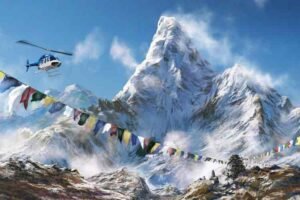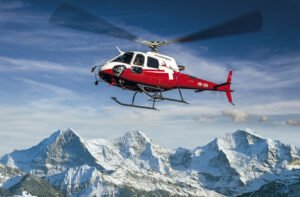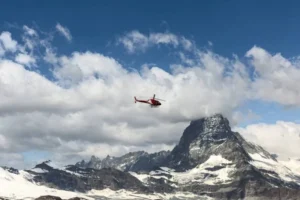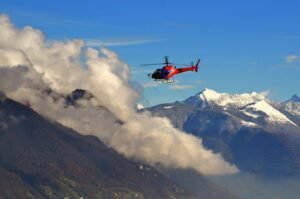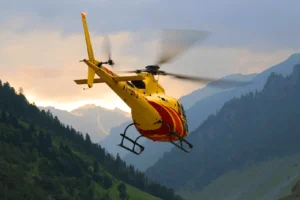Kailash Manasarovar Yatra by Helicopter
Kailash Manasarovar Yatra by Helicopter
10 Days

Overview
Are you looking for Kailash Manasarovar yatra by helicopter? Then you have come to the right place. We stay close to Lake Manasarovar and do 3 days of Kailash parikrama by trek. You don’t need to travel through rugged terrain on foot for your yatra to Kailash Manasarovar. Instead, fly to your destination on a helicopter and make your entire yatra more thrilling. More than 6% of the Yatris choose to board a helicopter and you can do so too by opting for Divine Kailash’s Kailash Helicopter tour.
Are you worried about COVID-19? Divine Kailash will take all precautions to keep you safe on the Kailash Manasarovar yatra by helicopter. Please check out our Kailash Manasarovar yatra helicopter package and set out on a divine journey- only with Divine Kailash. Our package is strictly formulated by expert tour guides to keep you safe while you enjoy the Kailash helicopter yatra.
Kailash Manasarovar Yatra by Helicopter 2026-27 - Route or Road Map
The Kailash Manasarovar helicopter yatra starts from the capital city of Uttar Pradesh, Lucknow. Then, we cross the Indian border at Rupaidiha and enter Nepalgunj, which is in Nepal. The total distance from Lucknow to Nepalgunj is around 180 KMs. Nepalgunj is a small town situated on the Tarai.
Then on our helicopter yatra to Kailash Manasarovar, we fly from Nepalgunj to Simikot in a small mountain flight which takes 30 minutes to reach. After Simikot, we will fly in a Helicopter for 25 minutes to reach the small mountaintop town of Hilsa, which is our border entry point for Tibet. After entering Tibet, our entire journey will be on a bus and on foot during parikrama.
Photo Gallery
Kailash Manasarovar Yatra by Helicopter Highlight
The highlight of the Mount Kailash Tour by Air:
- Region: Nepal and Tibet autonomous region of China.
- Tour Activity Type: Group Tour.
- Group Size: Minimum 21 People per Group.
- Duration: 9 nights / 10 days.
- Difficulty Level: Easy, Medium, and High.
- Best time to travel: May to September.
- Approx Trekking KM (Parikrama): 39 KMs.
- Trip Begins and Ends at Lucknow.
- Maximum Altitude Gain: 5,620 meters / 18, 438 feet (Dolma La Pass).
- Border Entry and Exit: Hilsa for Tibet / Nepalgunj for Nepal.
- Type of Accommodation: Hotel / Guest House.
Itinerary
Kailash Manasarovar 14-Day Helicopter Package Cost, Travel Plan, Itinerary
Arrive at Lucknow and Drive to Nepalgunj. We will start our drive to Nepalgunj, the nearest Indo – Nepal border. The distance is around 180 Kms which takes 4 hours for us to reach. Check in at the hotel and relax. After dinner, we will have a briefing about the Kailash Manasarovar Helicopter Yatra. Post briefing, final preparations, and packing.
Elevation: 135 meters.
Accommodation: 3 / 4 Star Hotel on a twin-sharing basis.
Food: Vegetarian Dinner.
On day two of our Mt Kailash Helicopter Tour, we head straight to Nepalgunj Airport and fly to Simikot. This flying experience will be a thrilling one, as you will fly in a 16-seater aircraft through the clouds above the beautiful Himalayas- a sight that is truly a feast to the eyes. From Nepalgunj, it will take around 50 mins to reach the beautiful town of Simikot. The rest of the day is for acclimatization. We recommend our Yatris walk around the town for better acclimatization.
Elevation: 2, 900 meters.
Accommodation: Standard Hotel on Multi sharing basis.
Food: Vegetarian Breakfast, Lunch, and Dinner.
As this is Kailash Manasarovar Yatra by air, we will take a helicopter to reach Hilsa, the flying experience from Simikot to Hilsa is indeed a memorable one. You will fly over the beautiful snow-covered Himalayas to reach the beautiful tiny village of Hilsa, which is the Nepal – China border. Then, we will take a short walk to the Immigration office and finish our immigration and customs formalities.
We will meet our support crew after crossing the border. Then, we take an hour’s drive to reach Taklakot. Acclimatization is essential at this height for your Kailash Manasarovar yatra by helicopter and taking a walk around will help our Yatris better. Drinking hot water at such a high altitude is an extremely healthy practice for a successful yatra.
Elevation: 3, 900 meters.
Accommodation: 3-Star Hotel twin and multiple sharing bases.
Food: Vegetarian Breakfast, Lunch, and Dinner.
We start our drive to the Holy Lake Manasarovar on the 4th day of our Kailash Manasarovar yatra by helicopter. Lake Manasarovar is around 70 km from Taklakot, and it will take 2 hours for us to reach the holy place. Further, we will complete the lake Manasarovar parikrama by vehicle. The breathtaking views of lake Manasarovar are the ones to cherish about.
Elevation: 4, 500 meters.
Accommodation: Basic Guest Houses on a multiple-sharing basis.
Food: Vegetarian Breakfast, Lunch, and Dinner.
We start our day 5 of Kailash Manasarovar yatra by helicopter by bathing at the banks of the Holy Lake, followed by offering prayers, performing Hawan and Puja, meditation, and other spiritual activities followed by lunch. After lunch, we start our drive to Darchen, which is 40 Kms from Manasarovar and will only take an hour to reach.
Elevation: 4700 meters.
Accommodation: Basic Guest Houses on a multiple-sharing basis.
Food: Vegetarian Breakfast, Lunch, and Dinner.
After breakfast, we will take a short drive to Yam Dwar, the starting point of the Parikrama, the destination today is Dirapuk, and it is a 12 Kms trek, and it takes 6 hours. Pilgrims can either hire a horse or do a trek. Pilgrims can also hire porters to carry backpacks.
However, please note that these extra expenditures are not included in our Kailash Manasarovar yatra helicopter package cost. The journey is filled with beautiful panoramic views of the Himalayas as well as the Holy Mount Kailash. We recommend our Yatries have plenty of hot water as it helps in better acclimatization for a smooth Kailash Manasarovar yatra by helicopter.
Elevation: 4, 900 meters.
Accommodation: Basic Guest Houses on a multiple-sharing basis.
Food: Vegetarian Breakfast, Lunch, and Dinner.
Note: Yatries who are not doing Kailash parikrama will have Darshan at Yamdwar and return to Darchen. And stay at Darchen until the Parikrama Yatries returns.
We will have an intense trek of about 22 km on the 7th day of our Kailash Manasarovar Yatra by Helicopter, this is the toughest part of Parikrama. After Gaurikund, we trek downhill towards a valley where you find a few local tea stalls. So, you can relax, snack on, and have a cup of tea to re-energize yourself, and then we continue our journey to Zuthulphuk, which is a 1-hour trek from the tea stall. start our day with a light breakfast and proceed to Zuthulphuk crossing the mighty Dolma La Pass, at the height of 5, 620 meters. The trek goes with a steep climb up of about 3 to 4 hours to cross the pass and steep climbing down about 1 hour after Gaurikund, then it’s fully flat till Zuthulphuk which takes another 2 hours.
Elevation: 4, 790 meters.
Accommodation: Basic Guest Houses on a multiple-sharing basis.
Food: Vegetarian Breakfast, Lunch, and Dinner.
On this day of the Kailash Manasarovar yatra 2025 by helicopter, we will start the short trek of 5 km, which takes maximum 2 hours to the endpoint from where we will board a bus to Darchen. We join our fellow Yatries at Darchen, have breakfast, and begin our drive to Hilsa via Taklakot and fly by helicopter to Simikot.
Elevation: 2, 900 meters.
Accommodation: Standard Hotel on a twin and Multiple sharing basis.
Food: Vegetarian Breakfast, Lunch, and Dinner.
After breakfast, we will fly to Nepalgunj, check in at the hotel, and relax. Final meet and greet with the organizers followed by certificate distribution for successful completion of the Kailash Manasarovar Yatra by helicopter.
Elevation: 135 meters.
Accommodation: 3 / 4 Star Hotel on a twin and Multiple sharing basis.
Food: Vegetarian Breakfast, Lunch, and Dinner.
The Mt Kailash Helicopter Tour ends here. After breakfast, check out and transfer to Lucknow and drop off. Finally, fly back to your homeland with a bag full of memories and blessings of Bholenath.
Food: Vegetarian Breakfast.
Please Note: The Kailash Manasarovar yatra helicopter package plan for days 8, 9, and 10 is subject to change according to the weather conditions.
Inclusion & Exclusion
Inclusions of the Kailash Mansarovar Package Tour by Helicopter
- Accommodation with vegetarian Indian food as mentioned in the itinerary throughout the Kailash helicopter yatra.
- Permit and Visa Charges – Tibet-China visa, Tibet entry permit, Kailash and Manasarovar Lake Parikrama entry fees, and all local taxes.
- Support Crew – Experienced and Certified English and Hindi Speaking Nepali Guide, English Speaking Certified Chinese Guide, Experienced Cook and Nepalese Sherpas for handling the baggage will be included in Kailash Manasarovar Yatra by Helicopter tour.
- First Aid Kit and Oxygen Cylinders for emergencies is included in the kailash mansarovar yatra helicopter package cost. All our guides are trained in First Aid.
- Down Jacket, Duffle Bag, Day pack, and Warm cap (Down Jacket should be returned and the rest is a souvenir from our company).
- Toilet Tents, Toilet Chairs, and Shower tents for women in Manasarovar is included in Kailash Mansarovar yatra helicopter package cost.
- Transportation – Transfers from Lucknow, Bus/Van Transfers as per the above itinerary.
- Nepalgunj to Simikot return flight tickets.
- Helicopter Fares for Kailash helicopter yatra from Simikot to Hilsa and return(5 Seater).
Exclusions of Mount Kailash Manasarovar Yatra by Helicopter
- Travel Expense to reach and return from Lucknow is not included in cost of Kailash Manasarovar yatra by helicopter
- Travel Insurance, Rescue and Emergency Evacuation Charges, Medical, and Hospital Expenses in case of any emergency during the Yatra.
- Extra Accommodation and food if in case the Yatra is delayed/ postponed due to weather or any other unavoidable circumstances.
- Group Visa Splitting Charges – If any Yatri decides to return midway from the Yatra, an amount of RMB 165* for visa splitting and USD 100*/day for transportation will be charged according to the China – FEC rules. *The mentioned amount gets changed every year.
- Personal Expenses, Expenses for hiring a horse for Parikrama, and Porters for Parikrama.
- Beverages and other food which is not mentioned in the Kailash Manasarovar Yatra by Helicopter itinerary.
- Anything which is not specifically mentioned under ‘Cost Inclusions’ of our Kailash Manasarovar Package Tour by Helicopter.
Safety Tips for Kailash Manasarovar Helicopter Yatra
Safety Tips for Kailash Manasarovar Helicopter Yatra
When you are taking on the Kailash Manasarovar helicopter yatra, please follow the below-mentioned tips to make your trip safe and secured:
- Drink lots of hot water.
- Rest after every 15 minutes of trekking.
- Do not talk much while trekking.
- Carry general medicines.
- Pack ample warm clothes.
- Carry dry food for your Kailash Manasarovar yatra by helicopter.
- Carry a first aid box for emergencies.
- Do not forget to carry your visa permit and identity proof.
- Wear comfortable footwear designed for trekking.
- Make sure to check up with a doctor before choosing the Kailash Manasarovar yatra 2026 by helicopter.
- If you are traveling with anyone above the age of 70, please carry all their medical certificates.
- Wear your mask and carry sanitizers on your Kailash Manasarovar helicopter tour.
- Maintain social distancing.
- Carry vaccination certificates.
- Make sure to carry your COVID-19 negative report.
- For Kailash Manasarovar yatra by helicopter, you must consume food that is rich in carbohydrates and is also immensely healthy to avoid altitude sickness.
- Do not consume alcohol or smoke cigarettes during the trek to avoid dehydration.
FAQ
FAQs On Helicopter Yatra to Kailash Manasarovar
The height of Mt Kailash is 6,714 m. It is situated Kailash Range of the Transhimalaya is in the western part of the Tibetan Plateau.
Mt Kailash is considered the home of Lord Shiva by Hindus. It is believed that Lord Shiva resides there and that is why many devotees visit the holy site every year.
The Kailash tour by helicopter is very easy as it does not involve much movement. Visitors can enjoy the view without having to face a rough crowd. The Kailash tour by helicopter is also very exciting, however, it can get a little difficult for older people.
The Manasarovar lake is located in the Tibetan Autonomous Region near Mt. Kailash.
Yes a passport is mandatory to visit Mt. Kailash.
Customer Reviews
GOODTrustindex verifies that the original source of the review is Google. We are five Bangalore residents who travelled to Muktinath, Pokhara, and Kathmandu with Divine Kailash in December 2022. It was a road trip from Gorakhpur, and everything went perfectly, with excellent service, hotels, food, and all arrangements. The best part is the Nepali support contact; one phone call and all your problems are resolved. Special thanks to both drivers, who are very experienced, and especially to the Nepali driver who drove us to Muktinath.Posted onTrustindex verifies that the original source of the review is Google. Went with divine kailash, Bangalore, to muktinath, pokhara and kathmandu. The period was from 10th October to 16th October, 2022 and pick up and drop was from gorakhpur. The trip was excellently organised at minimum cost. The hotels were very good. Overall it was an excellent trip with excellent arrangements by divine kailash.Posted onTrustindex verifies that the original source of the review is Google. HI, We, a family of 5, (4 Senior citizens,) booked a tour from chennai to gorakpur,mukthinath, pasupathinath,pokhra, kathmandu, janakpur,gorakhpur, ayodhya, naimisharanya. The entire tour was tailormade and organised by Divine Kailash. Mr. Akshay from Bangalore office chalked out our itinary as per our demands. He is a very cordial, helpful person. Till we returned back to chennai, he was constantly enquiring about our well being and catering to our every requests. We are grateful to him for his support throughout. REG. our trip: From Gorakhpur they booked an Innova for us. The driver Mr.Manish was a superb , dynamic and skilled person. Mr.Manish guided us in such a way, to cover all the places in our package. Had a leisurely darshan in all the temples.The hotels booked for us were very clean and classy. Our Package included Breakfast and dinner which were served on time and service wise and quality wise was very delicious. .Ours was a 12day tour and a a very memorable one. Gorakhpur - Gorakhnath Temple - Gorakhpur to Lumbini - by Road - covered Lumbini, Buddhas Birthplace, Monastries of varoius countries Lumbini to Bhairahawa - visited Gajendra Moksha sthala Bhairahawa to Pokhra - by road and stay in Pokhra Pokhra to Jomsom - by flight Jomsom to Mukthinath - by Jeep till mukthinath Base and then we trekked to the temple,. We took almost 1 hour as we took rest in between. As it was slightly sunny, we took bath in Icecold 108 springs, and two Kunds and stayed till 4pm. Very very peaceful darshan of Mukthinath. On our return stayed in Jomsom for the night and flew back to Pokhra the next morning Pokhra sight seeing like gupteshwar Mahadev, Davis Falls, Phewa Lake and Taal barahi Temple Pokhra to Kathmandu - by Road - very Scenic route crossing many mountains and rivers below. We skipped Manakamna Devi Temple as there was very very lengthy queues . Instead we covered Chandragiri hills by cable car and enjoyed the view of kathmandu valley, and beautiful snow clad Himalayas. The entrance fee is fair and the place is well maintained. In Kathmandu visited the great Pasupathinath Temple, Guhyeshari Temple - Shakthi Peeth, Jal Narayan, Doleshwar Mahadev one of the Panch Kedar, Bhakthapur Durbar Square fully,, Changu Narayan Temple From Kathmandu to Janakpur by Road again a very scenic route and skillful drive by Mr.Manish, visited Janaki Mata temple- Sita Marhi, Birthplace of Mata Sita devi Janakpur to Gorakhpur to Ayuodhya- visited Ayodhya temple Drive to Naimisharanya stay for night. Naimisharanya temple and Ghats visit and proceded to Lucknow airport to board flight to chennai. Cons: If a guide was provided at Bhakthapur Durbar Square, it would have been better. We suggest Divine Kailash to arrange for dropping and pickup of the tourists nearer to the Temples like many other tourist buses and cabs. Reg. Hotels: Gorakhpur : Hotel 10th Park Street - a very very classy hotel, a very clean and prompt service and great food Bhairahawa: Hotel Redson -- OK but not great -- have to wait for hours to get ur food. Pokhra - Kuti Resort 2. an annexe of Kutti Resort...Food and beverages was served inMain Kuti Resort - for which we had to shuttle everytime which could hav been avoided. Naimisharanya - Viswanath Palace- Which should be avoided and not a worthy place to stay Except for these minor issues, our entire trip was well organised and executed. We thank Mr. Akash, Mr. Manish and Mr. Nitesh of Nepal for making this happen.
MAP
No map available.
Price Details
300, 000

